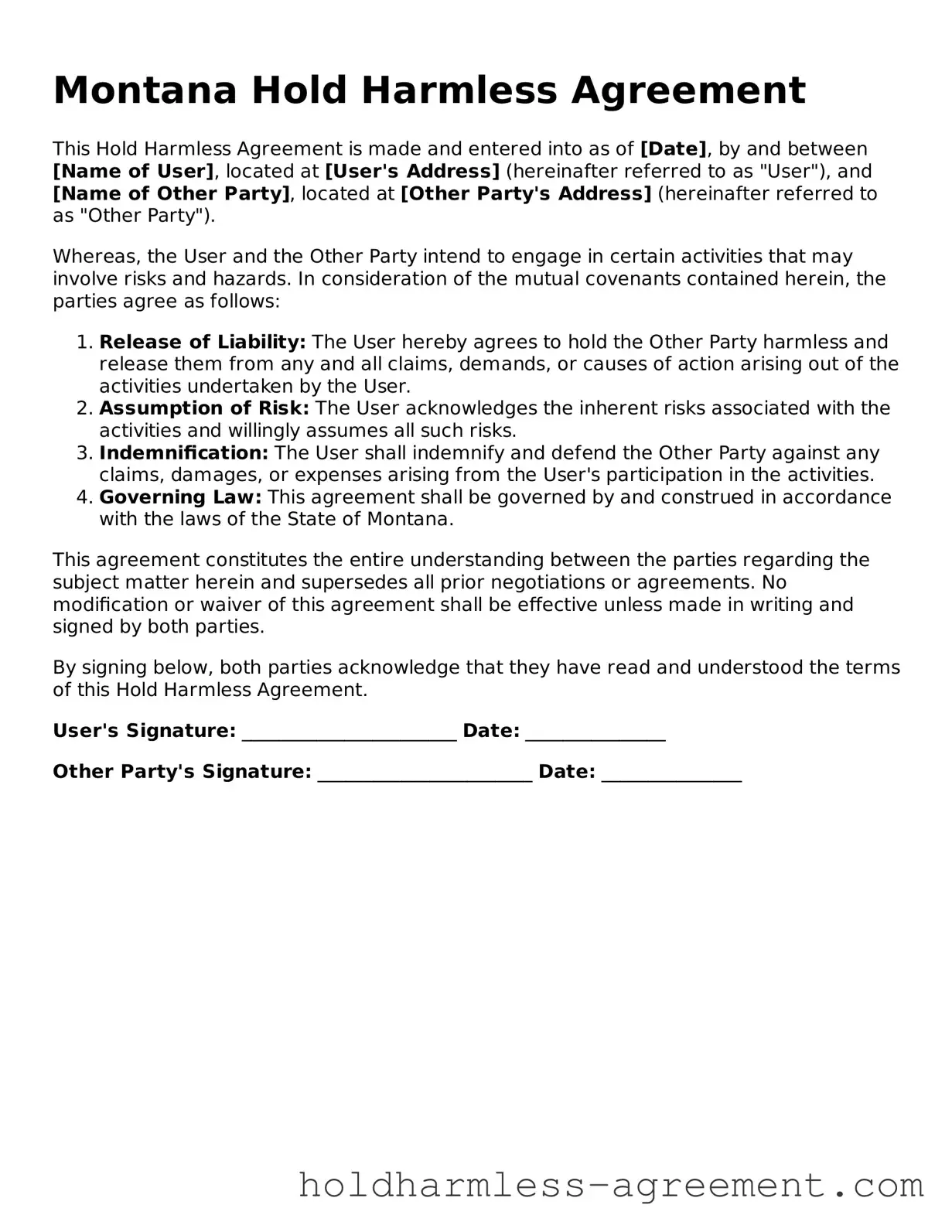What is a Montana Hold Harmless Agreement?
A Montana Hold Harmless Agreement is a legal document that protects one party from liability for any injuries or damages that may occur during a specific activity or event. This agreement is commonly used in situations where one party is providing services or facilities to another party, ensuring that the provider is not held responsible for unforeseen incidents.
Who typically uses a Hold Harmless Agreement in Montana?
Various individuals and organizations utilize Hold Harmless Agreements in Montana. Common users include:
-
Contractors and subcontractors
-
Event organizers
-
Property owners
-
Non-profit organizations
-
Businesses offering recreational activities
What are the key components of a Hold Harmless Agreement?
A comprehensive Hold Harmless Agreement should include the following elements:
-
The names and contact information of the parties involved.
-
A clear description of the activities or events covered by the agreement.
-
A statement outlining the extent of liability being waived.
-
Any specific terms or conditions related to the agreement.
-
Signatures of all parties, indicating their consent and understanding.
Is a Hold Harmless Agreement legally binding in Montana?
Yes, a Hold Harmless Agreement can be legally binding in Montana, provided it is drafted correctly and both parties agree to its terms. However, certain limitations may apply, especially if the agreement attempts to waive liability for gross negligence or willful misconduct.
How does a Hold Harmless Agreement differ from insurance?
While both a Hold Harmless Agreement and insurance provide protection against liability, they serve different purposes. A Hold Harmless Agreement shifts the responsibility for liability from one party to another, whereas insurance provides financial coverage in case of claims or lawsuits. It is often advisable to have both in place for comprehensive protection.
Can a Hold Harmless Agreement be revoked or modified?
Yes, a Hold Harmless Agreement can be modified or revoked, but this typically requires the consent of all parties involved. Any changes should be documented in writing and signed to ensure clarity and mutual understanding.
What should I consider before signing a Hold Harmless Agreement?
Before signing a Hold Harmless Agreement, consider the following:
-
Understand the scope of liability being waived.
-
Assess the risks associated with the activity or event.
-
Consult with a legal professional to clarify any uncertainties.
-
Evaluate whether you have adequate insurance coverage.
Hold Harmless Agreement forms can often be obtained from various sources, including legal websites, local government offices, or legal professionals. It is essential to ensure that the form complies with Montana laws and is tailored to the specific needs of the parties involved.
